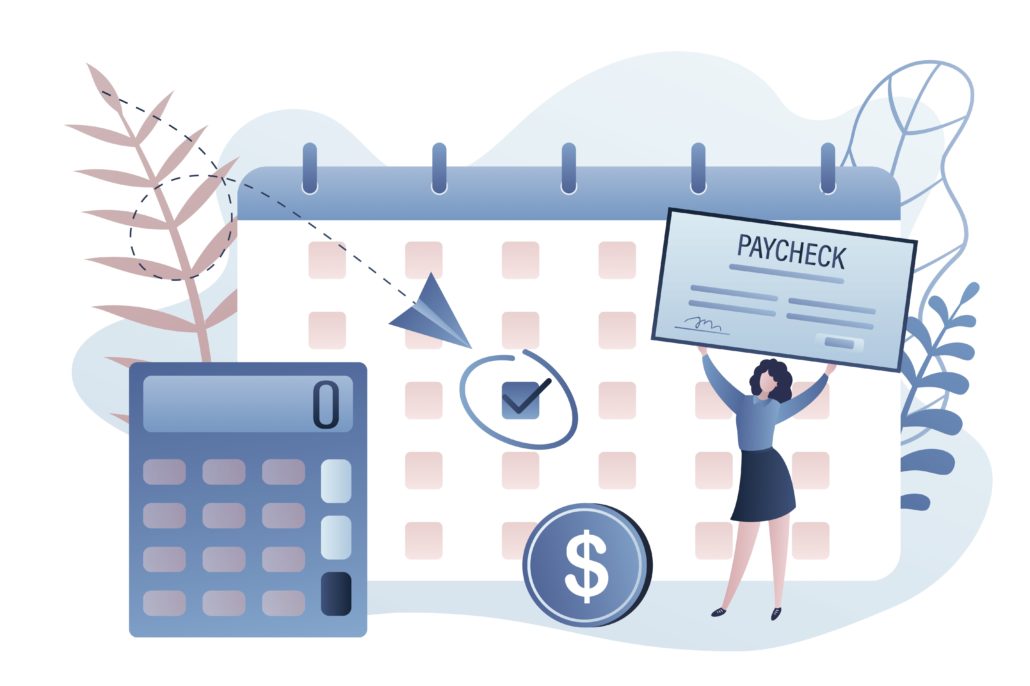Terminating Employees Due to COVID-19? Legal Requirements, Practical Tips, and Possible Alternatives

Many believe that the U.S. economy is currently in a recession or will soon enter one as a result of the economic impacts of Coronavirus Disease 2019 (COVID-19). Noted virtual capital firms are advising their portfolio companies to reevaluate expenses and headcount. If your startup is contemplating terminating employees as a way to reduce your burn rate in these uncertain economic times, there are some important legal and practical considerations you should keep in mind. This article discusses some of these considerations, as well as alternative options available to avoid or lessen the impact of layoffs.
Legal Requirements
The requirements below are not intended to be an exhaustive list of the requirements applicable to your situation. Employment laws can be complex. In addition to federal requirements, each state may have its own laws and regulations when it comes to terminating an employee. For this reason, it is strongly recommended that you discuss with an employment attorney or startup attorney to understand the full scope of the laws applicable to your employees.
Anti-discrimination Laws
An employer is prohibited from discriminating against employees on an impermissible basis, such as race, national origin, sex, pregnancy, religion, disability, age, marital status, sexual orientation, or gender identity. Similarly, an employer is required to make reasonable accommodations for an employee with a disability, and cannot terminate an employee for needing to take a leave of absence due to a serious medical condition. When considering which employees will be let go, it is absolutely critical that you do not use an impermissible basis that violates local, federal or state law. You should clearly set out and document the criteria used to decide which employees to terminate, whether based on seniority, importance of role and function, etc. And you should make sure you apply those criteria in an objective way.
Payment of Final Paycheck

When terminating an employee, you have to pay the employee any wages earned as of the termination date, including any earned but unused paid time off (PTO). If the employer had an unlimited PTO policy in place, there is no accrued PTO to pay out upon termination. Many states have specific laws around the timing of when a terminated employee’s final paycheck must be paid.
In California, companies must provide terminated employees with their final paycheck (including any accrued and unpaid PTO) at the time of termination (not the next payday or even the next day). Any delay entitles the employee to penalties. While you should check the requirements of the state in which your employees reside for more information, see here for a helpful breakdown of different states’ requirements.
Delivery of Notices and Documents
If your startup has more than 20 employees, your group health plan is generally required to provide a terminated employee with continued health care coverage under Consolidated Omnibus Budget Reconciliation Act (COBRA). You must notify your group health plan provider of the termination within 30 days so that the plan can provide an appropriate COBRA notice to the employee. In addition, you must provide information to each employee about their retirement benefits, if applicable (see here for more information).
Certain states impose additional requirements on employers when terminating an employee. For example, in California, terminated employees must be given a Notice to Employee as to Change in Relationship, a For Your Benefit, California’s Program for the Unemployed brochure, and CAL-COBRA notices (which can be obtained from the company’s health insurance provider). California companies with more than 20 employees must also provide each terminated employee with a Health Insurance Premium (HIPP) notice.
WARN Act
If your company has 100 or more employees, and 50 or more at a single site of employment will be laid off, the Worker Adjustment and Retraining (WARN) Act requires you to provide 60 calendar days advance written notice to employees of closings and layoffs. This notice allows the affected workers, their families, and their communities, if appropriate, to seek assistance through the State Rapid Response Dislocated Worker Unit. Upon receipt of a WARN notice, the Unit will coordinate with you to provide your workers on-site information about employment and retraining services. See the WARN Act employer’s guide here for more information.
Practical Considerations
Communicate Directly and Clearly
Terminating an employee can be a difficult thing to do, whether you’re a first-time founder or a serial entrepreneur. In an effort not to come across as too harsh, many employers make the mistake of not communicating clearly with the affected employee. It is recommended to notify an employee of a termination in person, where possible and safe. If in-person communication is not possible or safe -- for example due to a Shelter-in-Place order or the employee being remote -- video call is the best next option. If that’s not possible, let the employee know by phone. With very few exceptions, you should never terminate an employee by email or text.
When notifying the employee, you should clearly let the employee know that they are terminated and communicate a clear termination date and whether you are providing any severance pay. It may also be a good idea to communicate to the employee the reason for the termination to reduce the likelihood that the termination can be viewed by the employee as discriminatory in nature. Each situation is unique, however, so you should consult with an employment attorney or HR consultant regarding what is appropriate in your circumstances.
Provide Written Documentation

After notifying the employee either in person or by video/phone call, you should follow up with a formal termination notice letter. This letter should contain the same elements: the termination date, whether you are providing any severance, and the reason for the termination.
Obtain a Release
You should take reasonable steps to obtain a separation agreement and release from the terminated employee. This is a document that your venture capital investors will expect to see in the next round of financing when they conduct due diligence on your startup. Most important for you and your investors, this agreement includes a release of any legal claims the employee may have against your startup. And you generally need to provide the employee with a severance pay -- or another benefit that the employee would not otherwise be entitled to -- in order to make the release legally enforceable. For the release to be legally valid, the employee must be afforded time and opportunity to review the waiver with an attorney. An employee who is 40 years old or older should be provided at least 21 days to consider the release (although the employee may voluntarily elect to sign sooner), and a 7-days cooling off period after signing to revoke the release. The severance pay is typically not paid out until the expiration of this 7-day period. Here’s what the release should include at a minimum:
- The termination date.
- The amount of severance pay (or other benefit provided to the employee).
- A specific and general release of claims.
- A statement that the employee has had the opportunity to consult with an attorney and signing the agreement voluntarily.
- Any applicable waiting period for the release to become valid.
Secure Company Property (including IP)
If your employee has any company-owned equipment, such as laptop and/or cell phone, you should make sure the employee returns those upon termination. In addition, if the employee can access sensitive and confidential information of the company (such as customer lists, business plans, financial information, etc), you should begin to remove the employee’s access as soon as possible.
Repurchase Unvested Shares
If the employee holds any shares in the company that remain unvested as of the termination date, you should work with your attorney to make sure the company repurchases the shares in accordance with the stock purchase agreement between the company and the employee.
If, by contrast, the employee holds stock options, any unvested portion of the option will generally expire immediately upon termination, and the employee will generally have some time period after termination to exercise the vested portion of the option. For most employees, the time period is 3 months after termination, but it may be longer than that depending on the stock option agreement. While you aren’t legally required to notify your employee of the time period to exercise their option, your employee may appreciate the heads up, as the employee may not even be aware of the timing. In addition to being the right thing to do, this will likely help with future recruiting efforts. You may also choose to offer the employee the option to extend this post-termination exercise period beyond the typical 3 months. Given the potential tax impact to your employee of such an extension (see here for more information), you should not do this without consulting with a knowledgeable attorney.
Alternatives Strategies
Before deciding to let your employees go, you may want to consider less harmful alternatives. We are in an unprecedented global health and economic crisis, and your business is not alone right now. There may be public assistance available for your company or its employees or other creative ways to cut costs that enable your startup to retain its current talent.
Pay Cuts, Hours Reduction, and Unpaid Leave
Asking all employees, including core team members, to take a salary reduction may be an effective way to eliminate the need for -- or at least the impact of -- layoffs. For example, if all of your employees agree to a 10% cut in pay, you may not need to let 10% of your staff go. Additionally, this can foster a sense of community among your team and boost morale by letting everyone know that you’re in it together.
Similarly, you may work with your team to find a way to have some or all of your employees agree to a reduction of hours or temporary unpaid leave (also called a furlough). If you take this approach, depending on the laws of your state or city/county, the affected employees may be eligible for partial unemployment benefits. For example, California allows part-time workers to claim partial unemployment (a Notice of Reduced Earnings form is required to be submitted to the Employment Development Department and can be found here).
You should keep in mind that exempt and nonexempt employees are treated differently for purposes of reduced hours and unpaid leave (see here for more information about the difference between exempt and nonexempt employees). Exempt employees are typically paid a fixed salary, which means that they will earn the same pay regardless of the number of hours worked. Consequently, exempt employees are entitled to their regular pay for any week in which any work has been performed.
Work Share Programs
Several states, including California, provide work share programs for companies seeking alternatives to layoffs. Under the work share programs, employers can apply for unemployment insurance that will subsidize a portion of the employer’s lost wages due market downturns which can help eliminate or at least minimize the need for layoffs. Keeping trained employees will allow your business to quickly prepare when conditions improve and avoid the cost of recruiting, hiring, and training new employees. More information on the work share for businesses registered in California can be found here.
Work-From-Home

Implementing a work from home policy may help your business cut costs if you have a flexible lease or co-working space or other memberships or access fees, such as parking garages that can be cancelled or put on hold. Depending on your location and the evolving COVID-19 disaster, working from home may even be government mandated.
Note that in California, if an employer requires or strongly suggests that the employee work from home, the employer must reimburse the employee for reasonable and necessary business expenses, which may include home office equipment, office supplies and internet access. If your local government has mandated restrictions on public activity and travel, such as a Shelter-in-Place order, you are still required to reimburse employees who are now working from home for these costs as a business cannot pass its operating expenses onto its employees.
Disaster Loans and Other Funding Sources
In certain limited cases, your company may be able to take advantage of government small business disaster loans (EIDL) and other public assistance programs to stay afloat until the economy recovers from the COVID-19 pandemic. See this article for more information about those loans and alternative methods of funding potentially available to your startup.
Most recently, the Coronavirus Aid, Relief, and Economic Security Act (“CARES Act”) was signed into law, providing startups with up to 500 employees with SBA-approved loans of up to 2.5x average monthly payroll or $10M. Under the Paycheck Protection Program (or PPP), the loans may be forgiven subject to certain conditions. Therefore, it is recommended that most eligible startups apply for these loans through their lenders. See here for more details about the CARES Act.
Payroll Tax Deferral
The CARES Act also allows employers to defer certain employer-side taxes (generally, the 6.2% SSI contribution) for 2020. Employers must pay half of the deferred taxes by December 31, 2020, and the other half by December 31, 2021. Similarly, California now allows employers affected by COVID-19 to request a 60-day extension to pay their payroll taxes without interest or penalty. To do so, you should reach out to your payroll provider and ask them to submit an extension request for you. These measures will likely not make a significant difference for many companies on their own. However, when combined with EIDL/PPP loans, these measures may get your startup some temporary relief from the immediate impacts of COVID-19 and see how and when the economy recovers.
Business Interruption Insurance
You should check with your insurance carrier if your policy covers a situation like the COVID-19 pandemic. See this article for more information about how a business interruption insurance policy can benefit your business.
DISCLAIMER: The information in this article is provided for informational purposes only and should not be construed or relied upon as legal advice. This article may constitute attorney advertising under applicable state laws.
Categories
Recent Posts
- Negotiating Side Letters in Pre-Seed and Seed Rounds
- Key Terms: SAFEs & Convertible Notes for Pre-seed Funding
- A Guide To Raising Money From Accredited Investors
- Startup 101: Overview of Pre-Seed and Seed Investment
- SPZ Legal's Commitment to Social Impact with Pledge 1%
- Issuing Equity to Service Providers? A Guide to Equity Incentive Plans for Startups.
- A Guide to Navigating the New Beneficial Ownership Information Reporting Requirements
- Unveiling the Power of Venture Debt: A Legal Guide for Startup Founders